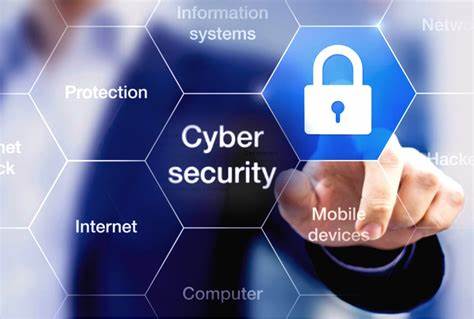The exponential growth of the e-commerce market has made cybersecurity a priority for businesses worldwide. Data from Juniper Research suggests that by 2023, online fraud will result in global losses of $48 billion, with Europe particularly vulnerable to cyberattacks.
The Ukrainian experience provides a valuable lesson for companies looking to protect their e-commerce business from various threats. In 2022, the country was hit with cyber-attacks resulting in significant financial losses to companies and individuals.
In response, the government launched an online security campaign to educate people about cyber safety and provide them with the necessary tools and resources to protect themselves.
E-Commerce Security in Ukraine
Research shows that over the past five years, the online trade market in Ukraine has grown five times, reaching $4 billion by the end of 2020, representing 8.8% of the total retail volume. This robust growth was driven by a growing number of consumers turning to online platforms for their shopping needs and technology’s increasing availability and affordability.
This is a powerful reminder of the importance of robust e-commerce site security measures for businesses operating in uncertain times. It highlights the fact that investing in e-commerce security can help businesses, especially e-commerce stores, protect their assets and continue to work even in the face of crises.
Why is E-Commerce Security More Important than Ever?
The world of e-commerce is vast and ever-expanding, with sales reaching an astounding 5.7 trillion dollars in 2022 and experts forecasting this number to soar to 8 trillion dollars by 2026. Therefore, e-commerce businesses must stay vigilant and proactively protect themselves from cyber threats. This includes regularly updating software, implementing robust security protocols, and monitoring suspicious activity.
Ignoring the issue of cybersecurity is no longer an option for e-commerce sites. With more money at stake than ever, online companies must take the necessary steps to protect themselves and their customers.
What is the first step in developing an e-commerce security plan?
As the world becomes increasingly digitized, security threats have become an ever-present concern for any e-commerce site. In the realm of e-commerce, this threat is particularly pressing, as online stores hold valuable customer data and financial information that is highly sought after by hackers.
To combat the ever-evolving security threats, experts recommend taking a three-pronged approach, including prevention, regular maintenance, and special protection measures.
Cyber Security Prevention
As e-commerce businesses grow, data protection and cyber security have become increasingly important. One of the critical steps that e-commerce stores can take to protect themselves from cyber threats is to adhere to the Payment Card Industry Data Security Standards (PCI DSS).
These requirements are an industry data security standard, providing guidelines for businesses that handle credit card transactions, and following them can significantly increase the level of protection of any e-commerce store.
12 requirements of Payment Card Industry Data Security Standards:
- Install and maintain a firewall configuration to protect cardholder data
- Do not use vendor-supplied defaults for system passwords and other security parameters
- Protect stored cardholder data
- Encrypt transmission of cardholder data across open, public networks
- Protect all systems against malware and regularly update antivirus software or programs
- Develop and maintain secure systems and applications
- Restrict access to cardholder data by business need to know
- Assign a unique ID to each person with computer access
- Restrict physical access to customer data
- Track and monitor all access to network resources and cardholder data
- Regularly test security systems and processes
- Maintain a policy that addresses information security for all personnel
Due to the war, the team of Perspective is geographically dispersed across different parts of Ukraine and Europe, and many people work remotely and use many other communication channels.
Secure Access Management
It is essential to develop rules for the transfer of access and to use multiple channels for communication and login credentials. For example, a temporary password sent through a separate channel can provide an added layer of security.
Another way is using a passport repository system that automatically deletes data after it has been accessed and used for the first time.
Multi-Factor Authentication
Implementing robust security management systems is crucial as businesses and organizations strive to gain access to data, such as credit card details, and protect it from hacking. One of the most effective ways to do this is through multi-factor authentication (MFA).
Two-factor authentication (2FA) is a popular method of MFA that has proven to be highly effective in providing an additional layer of security. Unfortunately, the essence of 2FA is often misunderstood. To truly understand how 2FA works, it is essential to remember the following principle: the first factor is something the client knows, such as a password, and the second factor is something the client has, such as a mobile device or a one-time password sent via SMS.
In addition, it is vital to review and update information security management systems regularly to ensure that they remain effective in protecting sensitive data. This includes regular software security updates, suspicious monitoring activity, using anti-malware software, and providing regular training to employees on best practices for data security.
Regular maintenance of the protection level
Cybersecurity is an ever-evolving field, and one of the most critical practices for protecting sensitive information is to keep software and security certificates updated.
Security Patches and Updates
Regular maintenance and security updates, including security patches, ensure vulnerabilities are identified and eliminated before malicious actors can exploit them.
For example, the e-commerce platform Magento releases such patches monthly, addressing security vulnerabilities discovered in the software. These patches are designed to address security issues, such as those listed in the Common Vulnerabilities and Exposures (CVE) catalog, which is regularly updated to reflect the latest threats.
SSL Certificates
Furthermore, using an SSL certificate is always a part of e-commerce security best practices. This digital certificate authenticates the identity of a legitimate website and encrypts information sent to the server using SSL technology. This helps to protect customers’ data, such as credit card data and login credentials, from financial fraud.
Security practices
Additional security measures are using strong passwords, not using the same password for different services, and ensuring that all employees are trained to identify and avoid phishing scams, SQL injection, and other malicious software.
Professional Security Testing
As the threat landscape of cybersecurity continues to evolve, e-commerce websites need to take proactive measures to protect sensitive data and systems from malicious code and attacks.
What is Penetration Testing and How Does it Work
One critical aspect of this is penetration testing, also known as “ethical hacking,” which involves simulating hackers’ attacks on a computer system to identify vulnerabilities that malicious actors can exploit. By simulating attacks, companies can identify vulnerabilities and take steps to mitigate them.
The Importance of Having a Plan B: What to do if the cyber attack succeeds?
As an online business, the security of your online e-commerce store or site is of the utmost importance. Unfortunately, no matter what security measures you take, there is always the possibility of a breach. For this reason, it’s essential to have a plan B in place in case the system has already suffered a disorder.
Security Backup and Recovery
One of the most critical measures is automating data backup and recovery processes. This ensures that even in the event of a breach, you will still have a copy of your customer and order database and other critical business information.
Service Level Agreement
Another vital aspect of e-commerce security is having a Service Level Agreement (SLA) with a technical contractor. This guarantees the quality of service in case of a malicious attack on your site.
We at Perspective specify the following things in the SLA:
- Fixed time to respond in case of a crime,
- Fixed time for a quick solution.
- Fixed time for a permanent solution.
For example, the contract may specify that the contractor within 2 hours should resume the site’s functioning, regardless of whether it occurred during or outside business hours.
In conclusion, protecting your online business from security breaches is a continuous process that requires a multi-layered approach. Furthermore, the education of the employees and customers is crucial to detect and reporting suspicious links.
Conclusion
As the world continues to shift towards online commerce, protecting e-commerce sites from attacks becomes increasingly crucial. With the vast amounts of personal and financial data stored on these sites, any e-commerce website must ensure that its customers’ information is secure. One of the most common e-commerce site security threats is data breaches.
Companies must be proactive to stay ahead of the curve in e-commerce security. This means selecting responsible partners and contractors, testing systems and protocols regularly, and staying informed about the latest threats and trends in the field. By taking these steps, companies can ensure that their customers’ data is safe and that their businesses are protected from costly breaches and penalties.



































